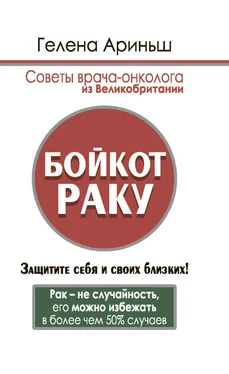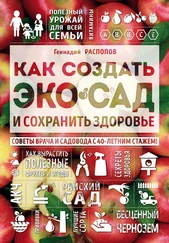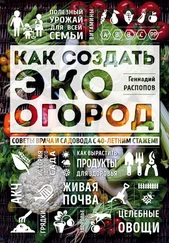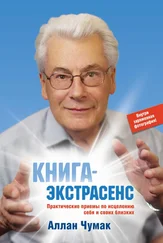55. Tashiro M, Itoh M, Kubota K, Kumano H, Masud MM, Moser E, Arai H, Sasaki H. Relationship between trait anxiety, brain activity and natural killer cell activity in cancer patients: a preliminary PET study. Psychooncology 2001; 10(6): 541–6.
56. House JS, Landis KR, Umberson D. Social relationship and health. Science 1988; 241: 540–5.
57. Reynolds P, Kaplan GA. Social connections and risk for cancer: prospective evidence from the Alameda county study. Behav Med 1990; 16: 101–10.
58. Phillips DP, Van Voorhees CA, Ruth TE. The birthday: lifeline or deadline? Psychosom Med 1992; 54: 532–42.
59. Phillips DP, Ruth TE, Wagner LM. Psychology and survival. Lancet 1993; 342: 1142–5.
60. Penninx BW. Chronically depressed mood and cancer risk in older persons. Journal of the National Cancer Institute 1998; 90: 1888–93.
61. Giese-Davis J, Collie K, Rancourt KM, et al. Decrease in depression symptoms is associated with longer survival in patients with metastatic breast cancer: a secondary analysis. J Clin Oncology 2011; 29: 413–20.
62. Spiegel D, Bloom JR, Yalom I. Group support for patients with metatatic cancer. A randomized outcome study. Arch Gen Psychiatry 1981; 38: 527–533.
63. Spiegel D, Bloom JR. Group therapy and hypnosis reduce metastatic breast carcinoma pain. Psychosom Med 1983; 45: 333–9.
64. Andersen BL, Yang HC, Farrar WB, et al. Psychologic intervention improves survival for breast cancer patients: a randomized clinical trial. Cancer 2008; 113: 3450–8.
65. Andersen BL, Thornton LM, Shapiro CL, et al. Biobehavioral, immune, and health benefits following recurrence for psychological intervention participants. Clin Cancer Research 16: 3270–8.
66. Spiegel D. A 43-year-old womancoping with cancer. JAMA 1999; 282: 371–8.
67. Kiecolt-Glaser JK, Glaser R. Psychoneuroimmunology and cancer: fact or fiction? European Journal of Cancer 1999; 35: 1603–7.
68. Antonijevic IA . Depressive disorders – is it time to endorse different pathophysiologies? Psychoneuroendocrinology 2006; 31: 1–15.
69. Riley V . Mouse mammary tumors: alteration of incidence as apparent function of stress. Science 1975; 189: 465–7.
70. Riley V. Psychoneuroendocrine influences on immunocompetence and neoplasia. Science 1981; 212: 1100–9.
71. Sapolsky RM, Donnelly TM. Vulnerability to stress-induced tumor growth increases with age in rats: role of glucocorticoids. Endocrinology 1985; 117: 662–6.
72. Sapolsky R, Krey L, McEwan BS. Prolonged glucocorticoidexposure reduces hippocampal neuron number: implications for aging. J Neurosci 1985; 5: 1222–1227.
73. Jayo JM, Shively CA, Kaplan JR, et al. Effects of exercise and stress on body fat distribution in male cynomolgus monkeys. Interbational Journal of Obesity&Related Metabolic Disorders 1993; 17: 597–604.
74. Epel E, McEwen B, Seeman T, et al. Psychological stress and lack of cortisol habituation among women with abdominal fat distribution. Psychosom Med 1999; 61:107.
75. Plotsky PM, Owens MJ, Nemeroff CB. Psychoneuroendocrinology of depression. Hypothalamic-pituitary-adrenal axis. Psychiatr Clin North Am 1998; 21: 293–307.
76. Posener JA, Schildkraut JJ, Samson JA, et al . Diurnal variation of plasma cortisol and homovanillic acid in healthy subjects. Psychoneuroendocrinology 1996; 21: 33–8.
77. David Spiegel. Mind matters in cancer survival. Psychooncology 2012; 21(6): 588–593.
78. Sheridan JF, Dobbs C, Jung J, et al. Stress-induced neuroendocrine modulation of viral pathogenesis and immunity. Ann N Y Acad Sci 1998; 840: 803–8.
79. Sheridan JF. Stress-induced modulation of anti-viral immunity – Normal Cousins Memorial Lecture1997; Brain, Behav, Immun 1998; 12: 1–6.
80. Padgett DA, Loria RM, Sheridan JF. Endocrine regulation of the immune response to influenza virus infection with a metabolite of DHEA-androstenediol. J Neuroimmunol 1997; 78: 203–11.
81. Glaser R, Kiecolt-Glaser JK. Stress associated immune modulations: relevance to viral infections and chronic fatigue syndrome. American Journal of Medicine 1998; 105: 35S–42S.
82. Kiecolt-Glaser JK, Glaser R, Cacioppo JT, et al. Marital stress: immunologic, neuroendocrine, and autonomic correlates. Ann N Y Acad Sci 1998; 840: 656–63.
83. Cohen S, Tyrrell DA, Smith AP. Psychological stress and susceptibility too the common cold. N Engl J Med 1991; 325: 606–12.
84. Garssen B, Goodkin K. On the role of immunological factors as mediators between psychosocial factors and cancer progression. Psyciatry Res 1999; 85: 51–61.
85. Reynolds P, Hurley S, Torres M, Jackson J, Boyd P, Chen VW . Use of coping strategies and breast cancer survival: results from the Black/White cancer survival study. Am J Epidemiol 2000; 152: 940–948.
86. Garssen B, Remie M. Different concepts or different words? Concepts related to non-expression of negative emotions.In Emotional Expression and Health 2004, Nyclicek I, Temoshok L, Vingerhoets A, pp 117–136. Hove and New York: Brunner-Routledge.
87. Butow PN, Coates AS, Dunn S. Psychosocial predictors of survival: metastatic breast cancer. Ann Oncol 2000; 11: 469–474.
88. Butow PN, Coates AS, Dunn SM. Psychosocial predictors of survival in metastatic melanoma. J Clin Oncol 1999; 17: 2256–2263.
89. Folkman S, Chesney M, McKusick L, Ironson G, Johnson DS, Coates TJ. Translating coping theory into an intervention.In: The Social Context of Coping, Eckenrode J, pp 239–260. New York: Plenum Press.
90. Burgess C. Stress and cancer. Cancer Surv 1987; 6: 403–416.
91. Temoshok L. Personality, coping style, emotion and cancer: towards an integrative model. Cancer Surv 1987; 6: 545–567.
92. Dolbeaut S, Szporn A, Holland JC. Psycho-oncology: where have we been? Where are we going? Eur J Cancer 1999; 35: 1554–1558.
93. Gross J. Emotional expression in cancer onset and progression. Soc Sci Med 1989; 28: 1239–1248.
94. Greer S, Watson M. Towards a psychobiological model of cancer: psychological considerations. Soc Sci Med 1985; 20: 773–777.
95. Petticrew M, Bell R, Hunter D. Influence of psychological coping on survival and recurrence in people with cancer: systematic review. BMJ 2002; 325: 1066–1069.
96. Grossarth-Maticek R, Bastiaans J, Kanazir DT. Psychosocial factors as strong predictors of mortality from cancer, ischaemic heart disease and stroke: the Yugoslav prospective study. J Psychosom Res 1985; 29: 167–176.
97. van der Plog HM, Kleijn WC, Mook J, van Donge M, Pieters AMJ, Leer J-WH. Rationality and antiemotionality as a risk factor for cancer: concepts differentiation. J Psychosom Res 1989; 33: 217–225.
98. Swan G, Carmelli D, Dame A, Rosenman R, Spielberger C. The rationality/emotional defensiveness scale II. Convergent and discriminant correlational analysis in males and females with and without cancer. J Psycosom Res 1992; 36: 349–359.
Читать дальше
Конец ознакомительного отрывка
Купить книгу












